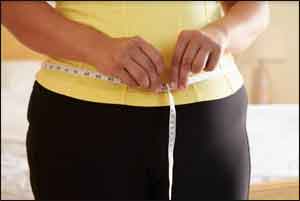- Home
- Editorial
- News
- Practice Guidelines
- Anesthesiology Guidelines
- Cancer Guidelines
- Cardiac Sciences Guidelines
- Critical Care Guidelines
- Dentistry Guidelines
- Dermatology Guidelines
- Diabetes and Endo Guidelines
- Diagnostics Guidelines
- ENT Guidelines
- Featured Practice Guidelines
- Gastroenterology Guidelines
- Geriatrics Guidelines
- Medicine Guidelines
- Nephrology Guidelines
- Neurosciences Guidelines
- Obs and Gynae Guidelines
- Ophthalmology Guidelines
- Orthopaedics Guidelines
- Paediatrics Guidelines
- Psychiatry Guidelines
- Pulmonology Guidelines
- Radiology Guidelines
- Surgery Guidelines
- Urology Guidelines
Abdominoplasty ('tummy tuck') after childbirth reduces back pain and incontinence

Abdominoplasty ('tummy tuck') surgery is classified as a cosmetic procedure carried out in women after child birth for restoring the pre-pregnancy shape of the abdomen.Dr.D. Alastair Taylor of The CAPS Clinic in Deakin, Australia has found in a study that Abdominoplasty surgery with muscle repair after childbirth reduces back pain and incontinence.The findings of study have been published in Plastic and Reconstructive Surgery®, the official medical journal of the American Society of Plastic Surgeons (ASPS).
The study included 214 women undergoing abdominoplasty with repair of the abdominal muscles at nine Australian plastic surgery centers. Many women seek tummy tuck surgery to restore the shape and appearance of the abdomen after childbearing. The women's average age was about 42 years, with an average of 2.5 deliveries.
Before and after surgery, the women completed questionnaires rating their disability from back pain and urinary incontinence: two very common problems after childbearing. In the preoperative questionnaires, about 51 percent of women had moderate to severe disability from back pain, while urinary incontinence was a "significant concern" for 42.5 percent.
On follow-up questionnaires at six weeks and six months, scores for both problems showed major improvement. At six months, only nine percent of patients still had moderate disability from back pain. Urinary incontinence remained a significant problem for less than two percent of women.
Scores for back pain continued to improve from six weeks to six months after abdominoplasty, while urinary incontinence improved no further after six weeks. The women underwent several different types of abdominoplasty surgery; the improvements in back pain and incontinence were similar regardless of the technique used.
Nearly 128,000 abdominoplasty procedures were performed in the United States in 2016, according to ASPS statistics. Tummy tuck is sometimes performed as part of "mommy makeovers" to restore the shape and appearance of a woman's body after childbearing.
The new findings--including before-and-after measurements in a large group of plastic surgery patients--are consistent with previous case reports of improvement in back pain and urinary incontinence after abdominoplasty. These functional improvements may result from restoring strength and stability in the abdominal and pelvic region as the operation incorporates repair of the abdominal muscle separation (rectus diastasis) that can occur after pregnancy.
"By reducing the problems of back pain and incontinence, abdominoplasty with rectus repair leads to a better life for women after childbearing," Dr. Taylor comments. He believes that health insurance plans should recognize that abdominoplasty has functional benefits, beyond the cosmetic improvement offered.
"The results demonstrate that tummy tucks do have functional benefits, as well as cosmetic ones, particularly in the postpartum population," comments Editor-in-Chief Rod J. Rohrich, MD, in a featured video on the Plastic and Reconstructive Surgery website. "If you are done having children, and still suffering from back pain or incontinence, you may consider an abdominoplasty as a surgical solution."

Disclaimer: This site is primarily intended for healthcare professionals. Any content/information on this website does not replace the advice of medical and/or health professionals and should not be construed as medical/diagnostic advice/endorsement or prescription. Use of this site is subject to our terms of use, privacy policy, advertisement policy. © 2020 Minerva Medical Treatment Pvt Ltd